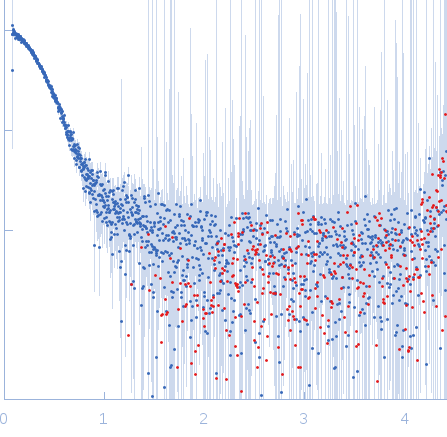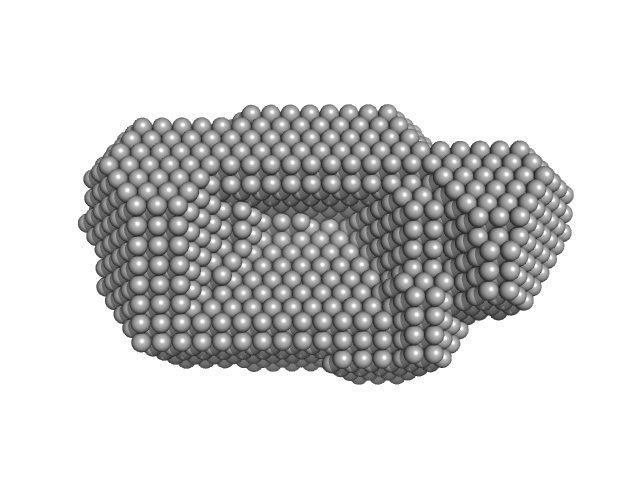| MWI(0) | 160 | kDa |
| MWexpected | 191 | kDa |
| VPorod | 307 | nm3 |
|
log I(s)
1.05×104
1.05×103
1.05×102
1.05×101
|
 s, nm-1
s, nm-1
|
|
|
|

|
|
Synchrotron SAXS
data from solutions of
MutS dimer
in
50 mM HEPES 50 mM KCl, pH 7.5
were collected
on the
EMBL P12 beam line
at the PETRA III storage ring
(DESY; Hamburg, Germany)
using a Pilatus 2M detector
at a sample-detector distance of 3.1 m and
at a wavelength of λ = 0.12 nm
(I(s) vs s, where s = 4πsinθ/λ, and 2θ is the scattering angle).
One solute concentration of 0.37 mg/ml was measured
at 10°C.
The data were normalized to the intensity of the transmitted beam and radially averaged; the scattering of the solvent-blank was subtracted.
Number of frames = UNKNOWN |
|
|||||||||||||||||||||||||||